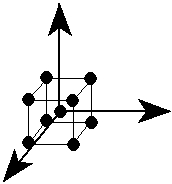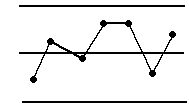
Quality engineering, applied statistical consulting,
and training services for R&D, product, process,
and manufacturing engineering organizations.

 |
Mathews Malnar and
Bailey, Inc. Quality engineering, applied statistical consulting, and training services for R&D, product, process, and manufacturing engineering organizations. |
 |
Sample
Size
Calculations
Students of this course will learn how to calculate sample sizes to test and quantify means, standard deviations, proportions, and counts. They will learn to apply these methods to data that will be analyzed by linear regression, correlation, designed experiments, reliability, statistical process control, acceptance sampling, process capability analysis, and gage error studies. Students will use manual calculation methods and software such as Russ Lenth's Piface program (www.stat.uiowa.edu/~rlenth/Power/), PASS, MINITAB, and/or R to solve practical sample size problems.
Who Should Take This Course: This
course is intended for process improvement specialists who work
in product or process engineering, manufacturing, research,
service industry, and business administration operations. The
course does not cover applications to medical clinical trials or
behavioral sciences, although many of the basic methods are the
same.
Prerequisite: Students should have strong math
and statistics skills including an excellent understanding of
the calculation, use, and interpretation of confidence intervals
and hypothesis tests. They should also have extensive experience
in the use of these methods in quality and process improvement
activities.
Textbook: Paul
Mathews, Sample Size Calculations: Practical
Methods for Engineers and Scientists.
Contact Hours: 8 hours (without homework) to
20 hours (with homework)
Course Format: The preferred course format is to present the material in five four-hour sessions with one session per week. This gives students time to read and study the methods of the week, to complete homework assignments, to consider personal applications of the methods, and to practice solving problems with the software of their choice.